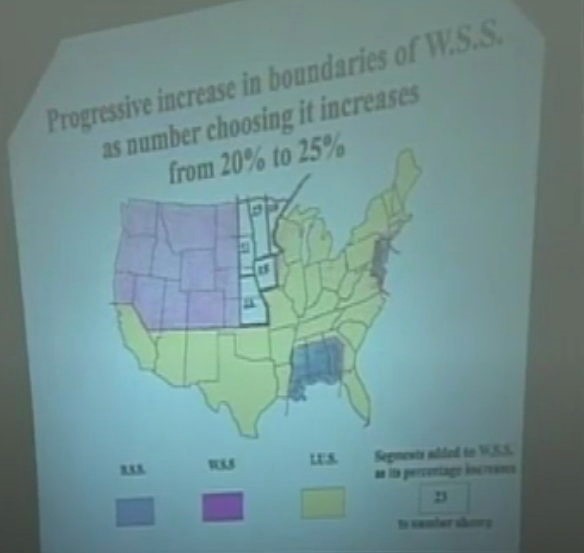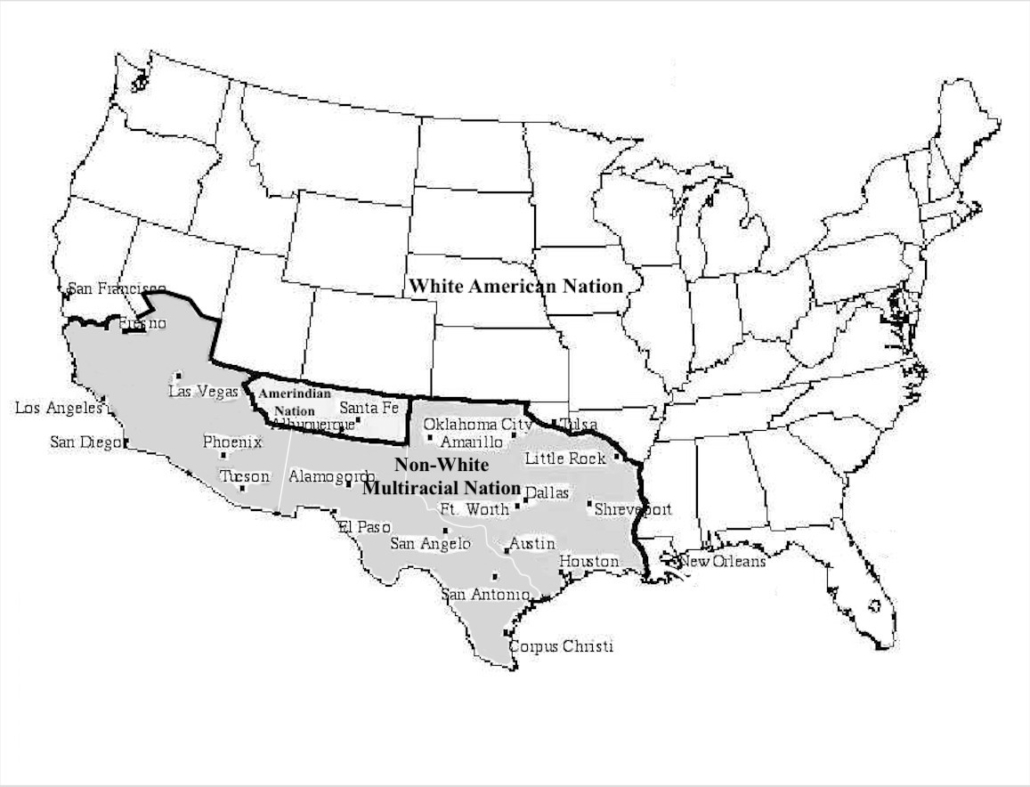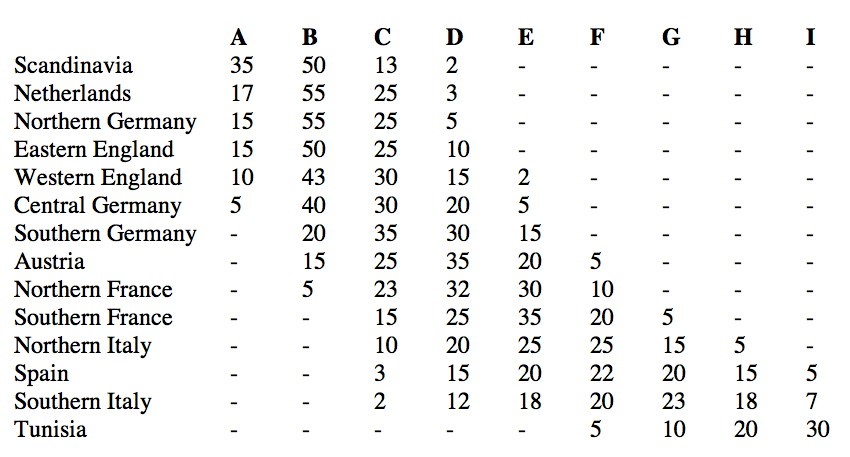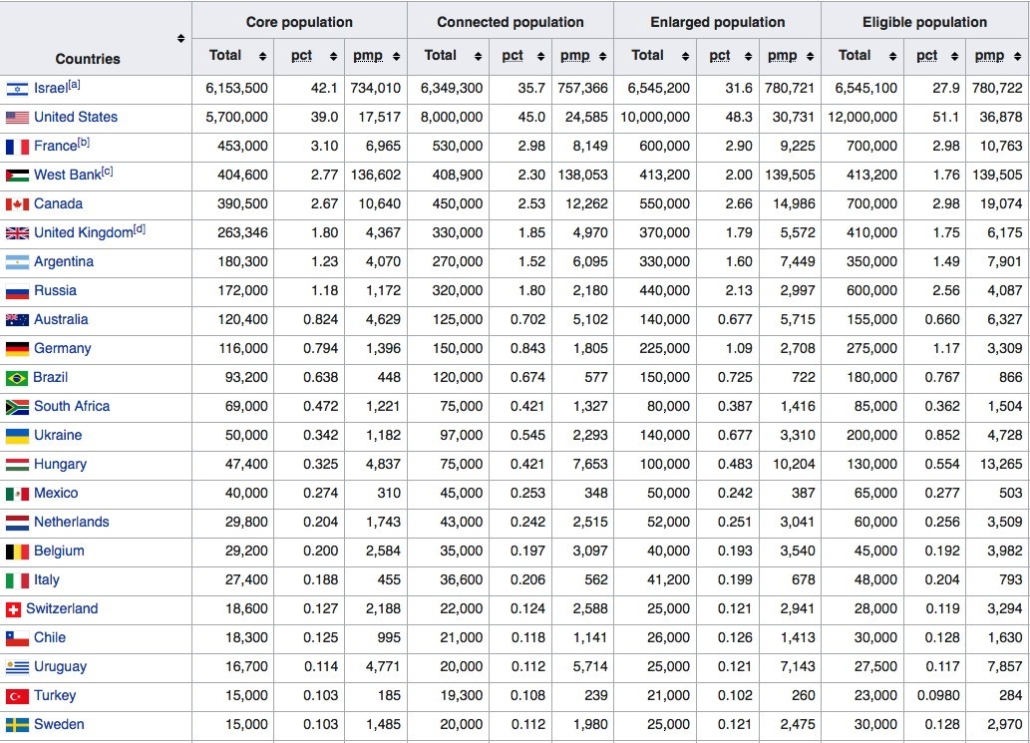Christian Zionism as a Parasitic Ideology
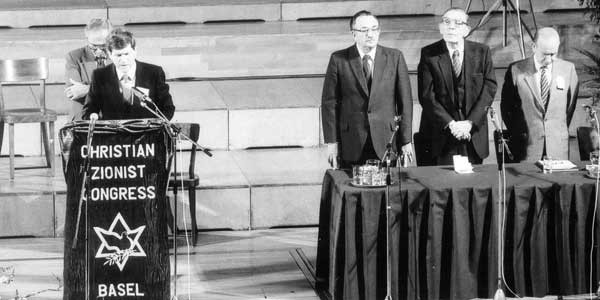
With Trump out of office, now would be a good time to critically re-examine one of the most remarkable, and ultimately problematic, features of his time as President — the extravagant support he enjoyed from evangelical Christians and the resurgence of Christian Zionism. Back in November, I linked Trump’s popularity among Red State Christians to “the power of personality,” which really only told half the story, and, even then, quite weakly. The mystery of why a huge block of ostensibly conservative voters would back such a materialistic, crass, irreligious, and vulgar man, who has done more than anyone in recent memory to export what E. Michael Jones has so aptly termed “the Gay Disco,” cried out for further explanation. This explanation surely isn’t to be found in his immigration-based reforms, which were abysmal and quickly-reversed failures. The real reason for his enduring and almost-spiritual adulation is, of course, found in Christian Zionism, and Trump’s Presidency, more than any other in recent memory, could be aptly characterised as the most flamboyantly Christian Zionist in living memory. By sheer coincidence, my intention to return to this subject for the first time since 2014 has coincided with the publication of an interesting article in the Routledge-published journal Ethnic and Racial Studies by S. Jonathon O’Donnell, who, as the current year would have it, appears to be an individual of ambiguous gender working at University College, Dublin. In the following essay I want to extricate some of the surprisingly useful elements from O’Donnell’s article “Antisemitism under erasure: Christian Zionist anti-globalism and the refusal of cohabitation,” and merge them with my own broader consideration of the Christian Zionist problem as an obstacle to White ethnic interests.[1]
O’Donnell’s article begins with an interesting paradox. American conservative support for Trump was primarily conditioned on just two premises: the first being that Trump was ardently pro-Israel; and the second being that Trump promised to take on ‘the globalists.’ O’Donnell points out, correctly in my view, that there is at least a very clear clash of subtexts here because “narratives of ‘globalism’ are rooted in and often deploy the codes of antisemitism.” A question emerges therefore in terms of how this conservative Christian support base is interacting with the concepts of Zionism and antisemitism, and the cognitive dissonance at work in their imagined war on the more abstract concept of ‘globalists.’ At a time when White advocates continue to attempt to define their opponents in the popular imagination in order to galvanise political action, the worldview of a class of Whites as large as evangelical Christians, many of whom are also ardent Christian Zionists, is surely of great concern and consequence.
There’s little question that Trump was placed on a pedestal by Zionism. Jewish elites often demonstrate a keen awareness of the individual flaws of their European counterparts, and they are especially attuned to signs of egoism. When the Grand Sanhedrin of Jewish notables was convened by Napoleon I in Paris in 1806, Jewish leaders responded to investigations of their financial and social habits not with honesty but with sycophancy. By indulging the egoism of the megalomaniacal Napoleon, who nurtured fantasies of himself as a new saviour of the Jews, rather than explaining their methods of collecting interest, the notables were successful in retaining French citizenship and paving the way for a radical expansion of power, wealth, and influence in Europe throughout the 19th century. It’s clear that Trump was perceived in the same way — as a figure best manipulated through gushing praise. O’Donnell points out that Trump was essentially baited with the prospect of joining a seemingly illustrious line of historical philo-Semitic gentiles in Jewish memory:
Speaking in Washington, DC, on 5 March 2018, after President Donald Trump’s declaration of the US embassy’s move from Tel Aviv to Jerusalem, Israeli prime minister Benjamin Netanyahu contextualized Trump’s declaration within a Jewish history of remembrance. “[W]e remember the proclamation of Cyrus the great, Persian king,” he declared, who 2,500 years ago ended the Jewish exile in Babylon and permitted the rebuilding of the Temple. “We remember … Lord Balfour,” he continued, who “recognized our rights … in our ancestral homeland,” Harry Truman, who recognized “Israel as the Jewish state.” And, finally, “Donald J. Trump [who] recognized Jerusalem as Israel’s capital. Mr President, this will be remembered throughout the ages.”
Even more salient, argues O’Donnell, is that by employing the reference to Cyrus, Netanyahu was dog-whistling to Christian Zionists more generally, and pandering to a growing religious sentiment that Trump had been raised up by God on behalf of the Jews. Among Christian evangelicals, Trump’s perceived actions on behalf of Israel became of radically greater consequence than anything he achieved, or failed to achieve, in the United States. In other words, these people really didn’t care that Trump couldn’t or wouldn’t build a wall, or limit immigration in any lasting way, because his actions on behalf of Israel were truly cosmic, rather than national, in their significance. Exemplifying this development, O’Donnell highlights two pro-Trump books popular among evangelicals: Lance Wallnau’s God’s Chaos Candidate (2016), and Mary Colbert’s The Trump Prophecies (2018). Wallnau, for example, claimed that “Trump is literally an individual raised up like a Cyrus candidate for the sake of God’s people, Israel, and the church.” O’Donnell astutely observes that “the narrative of Trump qua Cyrus—a pagan king used by God for providential ends—has helped evangelicals navigate popular perceptions of Trump’s lack of religiosity while also framing his political actions as furthering a divinely-ordained agenda.”
Such approaches represent not only a wholesale abandonment of any sense of ethnic interests, but also of religious interests since the fate of Christianity is itself made subservient to the fate of the Jews. Christian Zionism, as an anti-supercessionist ideology, is thus fundamentally parasitic in nature since it feeds off, and hides in, Christianity in order to funnel support to Jews as Jews.[2] This marks a break from classic Christianity, in which the Jews are worthy of detached concern to the Church only insofar as their souls may eventually be redeemed through conversion during the End Times. Christian Zionism, by contrast, presents an image of Jews having interests as Jews (rather than as potential Christians) and, furthermore, insists that Christians are duty-bound to serve those interests in this life and in this pre-apocalyptic age. Although the traffic in support is completely one-directional, Christian Zionism invariably posits a putative “shared interest” or “shared fate” in order to disguise the obvious subservience to Jews. This is illustrated by Colbert’s The Trump Prophecies, which was later adapted into a film by Liberty University, and which argued that America’s interests and those of Israel were utterly inseparable. The book made the claim that “the two [nations, Israel and America] shall be as one,” and advanced the argument that although Americans couldn’t see anything spiritually in Trump “in the natural,” God had ordained that Trump’s spiritual mission was primarily to demonstrate “his love for the Jews and all the ways he had reached out to the Jewish nation privately.” This echoed the sentiments of Bill Hamon of Christian International, who declared in 2015 that Christians should back Trump because Trump’s election would herald “a restoration of biblical Israel, a return of the Jewish nation, and rebuilding of the temple.” O’Donnell points to the very prominent promotion of the idea of a ‘Judeo-Christian’ civilization in the aftermath of 9/11, with this idea then “energized by the tenet of “blessing” Israel as necessary for national flourishing. Christian Zionist discourse created ‘a covenantal link between Christians and Israel that was both communal and individual,’ financial and soteriological.”
Running alongside this vision of a Biblical Zio-American empire is the somewhat paradoxical evangelical narrative of a war on ‘globalists.’ In these narratives, intellectually unsophisticated evangelicals, perhaps unwittingly, borrow from a worldview that has historically been very hostile to both Jews and Zionism. O’Donnell explains that evangelical authors Paul McGuire and Troy Anderson have argued that “the wealthy elite and secret societies [are] planning a global coup to launch a world state, cashless society, and New Age-Illuminati-based religious system … Trump champions the things that please God’s heart on many levels, including his opposition to globalism.” The cognitive dissonance here is obvious, namely, that Trump was largely backed by self-interested, wealthy, Zionist elites who overlap comfortably into areas such as support for gay marriage and other hallmarks of social decline frequently decried by these same evangelicals as being the work of ‘globalists.’ The inherent problem of Christian Zionism is therefore that it supports in reality (wealthy self-interested international elites) precisely what it claims to be fighting against in the abstract (‘globalists’). As O’Donnell points out, these evangelicals are managing to maintain this delusion primarily by projecting their abstract vision onto an “apocalyptic imaginary” filled with visions of a future Babylon from the book of Revelation, rather than reflecting on the obvious erosion of American national sovereignty happening in real time. In other words, it’s a form of organised insanity; a folie à deux on a mass scale.
The evangelical ‘anti-globalists’ McGuire and Anderson attributed Trump’s election to discontent at the “globalist policies, job-killing regulations, social engineering, failing educational programs … and endless insane regulations” that meant “Americans came to realize that they could no longer afford the American dream.” And yet by supporting Trump these same people joined hands with job-killing vulture fund bosses, gay marriage social engineers, and a string of committed Zionists who maintained a commitment to school ‘integration’ and the introduction of speech laws. Underpinning this cognitive dissonance is a stark Black-White worldview in which all nuance is abandoned. In short, everyone siding with Trump was presumed to be engaged in a war against the demonic and were therefore vindicated in the eyes of God. In such a worldview, Christian Zionism can cover a multitude of Jewish sins because it absolves them in the name of a joint effort against an amorphous Antichrist. O’Donnell points to the example of Robert Maginnis, retired US Army Lieutenant Colonel and fellow at fundamentalist think-tank the Family Research Council. For Maginnis, and other Christian Zionists like him, the world is essentially divided between the interests of a joint American-Israel imaginary, with everything outside that sphere vulnerable to the “demonic” and “anti-Christ” ‘globalist project.’ Carl Gallups, a Florida-based pastor who opened a Pensacola Trump rally in early 2016, has presented all opposition to Trump as originating from “the anti-national sovereignty demonic realm, which is a form of globalism, which is … the kingdom of Antichrist.” We might reasonably ask where in such narratives is there room for plain discussion of the activities of genuine and identifiable international elites likes Paul Singer?
O’Donnell comments that the only identifiable member of the ‘globalist’ international elite that Christian Zionists seem to feel comfortable addressing in an extended way is George Soros. Here, the anti-globalist discourse reveals itself to be parasitical on anti-Semitism in much the same way that Christian Zionism is parasitical on Christianity. Anti-globalist discourse offers little or no original thought, since it essentially feeds off discontent associated with historical Jewish influence without addressing Jewish influence. O’Donnell summarises anti-globalist rhetoric as “a code for extra-national allegiance, accompanied by fixations on rule by multi- and international organizations and refrains of the influence on “international finance” subverting national sovereignty.” Even when mention of specific Jewish elites, like the Rothschilds, becomes unavoidable, Christian Zionists simply engage in rhetorical sleight of hand in order to present these groups as being puppets rather than puppet masters. O’Donnell points to Pat Robertson, who, in his 1991 bestseller The New World Order, builds a narrative of a global conspiracy involving “European bankers” and “Freemasons” through tactical use of Jewish masons and Jewish bankers that allegedly attempted to destroy America via land purchases. The actual masterplan behind all of this thought is always elevated to the realms of the cosmic and the grandiose, and is never limited to something as sober as the simple pursuit of ethnic interests. A similar example can be found in John Hagee’s Earth’s Last Empire (2018), which claims Mayer Amschel Rothschild was a member of the one-world-government-seeking Illuminati, with no mention at all of later Rothschild family involvement in Zionism. O’Donnell points out that Christian Zionists have employed similar sleight of hand when dealing with figures like Saul Alinsky or the members of the Frankfurt School. Again, elite Jews acting in pursuit of Jewish interests are essentially masked in Christian Zionist narratives that place Jews in a subservient role to the Illuminati, the Antichrist, or other global conspiracies of a cosmic, supernatural, and certainly non-racial nature — none of which are in any way capable of being empirically examined and are for the most part, quite frankly, utterly ridiculous. And yet the power of these narratives is fundamentally derived from their parasitic reliance on pre-existing analyses based in the historical ethnic conflict between Jews and Europeans. This is parasitic reliance is most prominent in Christian Zionist discourse on George Soros.
The place of George Soros in conspiracy-based thinking is relatively new, beginning in the 1990s in the writings of Lyndon LaRouche, but gaining widespread currency only around 2003 when Glenn Beck “revealed” Soros as “puppet master” of America’s decline during a multi-day special of The Glenn Beck Program. Soros has since gone on to become a prominent feature of Christian Zionist anti-globalist rhetoric, but only in the same parasitical method described above. In my own view, Soros is clearly a problem, but equally problematic is the tendency to overdetermine his influence and activities in such as way as to present him as almost the sole individual involved. This latter approach is precisely what is found in Christian Zionist and generic ‘anti-globalist’ rhetoric. Robert Maginnis, for example, has written of Soros that “His level of influence belies the imagination. … He has funded numerous color revolutions, the Arab Spring and other political uprisings, seeded controversial groups in the U.S. such as Black Lives Matter, the planning behind the mass migration of Muslims into Europe, and much more … Soros’ money is behind much of the organized racial and civil chaos in American cities over the past several years.” O’Donnell notes that similar comments can be found in the works of John Hagee, Michael LeMay, and Lance Wallnau. The crucial point here, however, is that, as O’Donnell stresses:
It is notable that in these texts Soros’ Jewishness is elided. Maginnis writes only that Soros was born in Hungary “to Jewish parents” (2017, 144), while for McGuire and Anderson he is simply a “Hungarian American business magnate” (2018, 229) and for Strang a “Hungarian billionaire and former Nazi collaborator” (2017, 46)—referencing a time when Soros was fourteen, passing as Christian by working with his alleged godfather, an official who took inventory of confiscated Jewish property. Strang here distances Soros both from Jewishness and his US citizenship, following the lineage of Michael LeMay’s The Suicide of American Christianity, where Soros is only “a billionaire atheist who hates Christianity and America” and has invested millions towards their destruction (2012, 99)—chiefly by promoting inclusive forms of Christianity (see also Brogg 2014; Vicari 2014). Strang doubles down in a later work, echoing Maginnis in referencing Soros’ birth to “a family of nonpracticing Jews” and strategically quoting him to present his time with his godfather as “the happiest year of [Soros’] life.”
For O’Donnell, and I must say that I agree, this duplicity and parasitic use of narratives exposes “how Christian Zionism relies on the very antisemitism it decries.” Christian Zionism essentially filters genuine grievances through a fantastical worldview and perverse theology, directs these grievances at fantasies instead of reality, and, finally, uses the same sense of threat and apprehension to raise money and lobby politically on behalf of Zionist elites. At the heart of this duplicity is a dedicated effort to whitewash the actions of Jews as a people. O’Donnell remarks in this regard that “constructions of Soros … exemplify how Christian Zionist discourse polices the boundaries of Jewish identity, constructing some Jews as lesser or non-Jews in order to reinforce the fetishized figure of “Jews” upon which its cosmology rests.” In other words, any bad actions by Jews like Soros, Paul Singer, the Rothschilds, Moshe Kantor, and scores of other oligarchs, will be ignored, minimised, or rewritten by Christian Zionists in order to uphold the perverse theological vision that “the Jews” can do no wrong. Jews acting badly become simply “atheists,” “apostates,” or just “businessmen” or “financiers” — even where their ethnic affiliations are strong and their commitment to Zionism is unquestioned.
The problems posed by Christian Zionism are therefore numerous. O’Donnell remarks that
As a discourse that fetishizes “Jews” and “Israel” as guarantors of political and theological legitimacy, Christian Zionism makes personal and national support for and emulation of “Israel” the basis of cosmic and political order. As Amy Kaplan demonstrates, post-9/11 America has increasingly modelled itself on a vision of Israel, reconstructing domestic territoriality and national identity on the model of the “invincible victim,” for which the “radical insecurity” of a threatened “homeland” can end only in “absolute supremacy or utter annihilation.”
Unpacking this, it’s clear that the primary problem of Christian Zionism is the subjection of White American political (and geopolitical) aspirations to Israel and Jewish interests as a basis of “cosmic and political order.” Christian Zionism commands not only White Christian money, but White Christian political support, moral support, diplomatic support, and military support as a fundamental matter of Being. Simply to be a Christian, in this worldview, is to imply unrelenting support for Israel in order to maintain the sanctity of one’s soul. The obvious related problem is that, since Israel is for the most part a scorned pariah state, America (and other countries like Britain where the link is more political than religious in nature) is essentially tying itself to Israel’s pathological self-construct — the “invincible victim” that Kaplan refers to.
I disagree with Kaplan, however, that the most prominent manifestation of this self-construct in America is an increase in “domestic territoriality.” While there was an increase in domestic territoriality during the Trump campaign and Presidency, it’s clear now that it was weak and ineffectual, and ultimately of lower consequence to White evangelicals than action on behalf of Israel. Rather, the most prominent manifestation of this joint identification with Israel is in America’s growing (or perhaps resurgent, when one considers the philosophies of the Puritans) willingness to engage in belligerent foreign action in the belief that it has a kind of God-given right to dominate or act as world policeman. And from the Israeli example, America has increasingly given itself over to the construction of “gray zones of ambiguity for the exercise of power,” including those between “occupied/disputed territories; detainees/prisoners of war; soldiers/terrorists/ unlawful combatants; torture/enhanced interrogation; military/civil jurisdiction; legitimate/illegitimate violence—as well as material techniques of force, as Israeli and American arms and military training merge.” The result is large numbers of White Christians losing their freedoms even as they claim they are preserving them, and enriching and protecting global elites even as they claim to be fighting them. Is there any better example than the cheering for Trump as he released the traitor Pollard back to Israel? America may be the first nation in history to cheer its traitors! And yet the logic, though perverse, is clear — Pollard was an agent of God and America was wrong to punish him for stealing secrets.
A suitable response to what’s written above might be: Well, that describes the problem rather well, but what do we do about it? My honest answer is: I don’t know. Christian Zionism is particularly difficult to overcome precisely because of its parasitic nature. The old adage says that one should keep friends close, and enemies closer. What we see here, in the example of Christian Zionism and its attending ‘anti-globalist’ narratives, is an enemy that has strategically ‘drawn close.’ Christian Zionism feeds heavily on currents within Christianity and is so closely entwined with it now as to be almost inseparable. Anti-globalism, an imprecise miasma of conspiratorial ephemera that so often refuses to name names, has equally drawn close to anti-Semitism, borrowing everything it wants in order to foment energy and then funnelling that energy back to Zionist elites. Like a cancer attached too deeply to an organ, these problems can’t be resolved with simple, surgical methods. There will be no “cutting out” of these problems without massive damage to the body. The most likely remedy, if it is to come, will be in the form of political or spiritual “radiation” — a wholesale shock to the system brought about by economic, military, political, or environmental catastrophe. Failing this I have no answers.
[1] O’Donnell, S. J. (2020). Antisemitism under erasure: Christian Zionist anti-globalism and the refusal of cohabitation. Ethnic and Racial Studies, 1–19.
[2] It must be admitted that Christian Zionism also grew out from Christianity, and is not a totally foreign imposition. It can perhaps best be characterised as the cancerous metastasization of certain problematic or contradictory elements within Christian theology.
International Fellowship Of Christians and Jews TV Commercial ‘Relentless Poverty’ – iSpot.tv





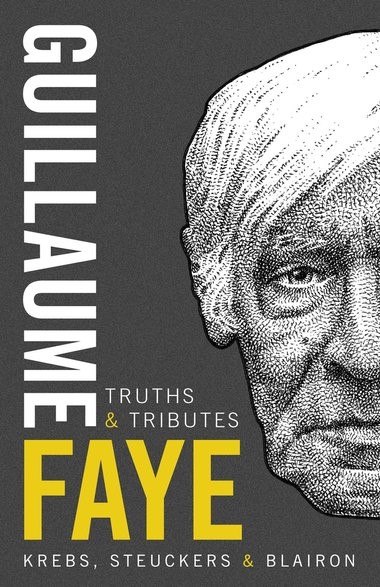 “Guillaume Faye was indeed an awakener.”
“Guillaume Faye was indeed an awakener.”